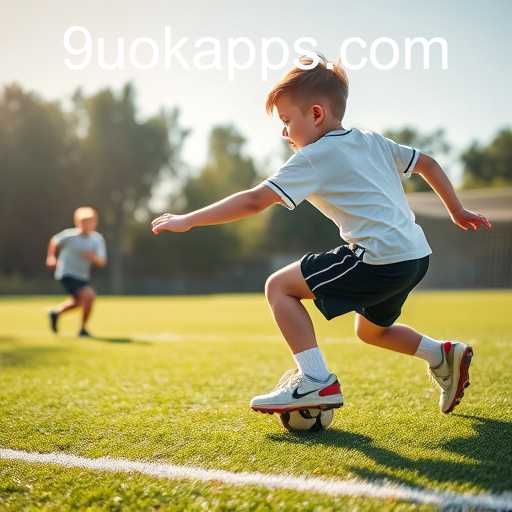The Evolution and Impact of Youth Sports: A Deep Dive into 9UOK
The Growing Popularity of Youth Sports
In recent years, the landscape of youth sports has acquired a dynamic makeover, with more attention being dedicated to structured programs for children. An exciting development in this sector is the rise of the 9UOK sports events, catering specifically to the under-nine age group. As the enthusiasm for these sports grows, it becomes critical to unravel the elements contributing to their increasing popularity.
The Advent of 9UOK in Youth Sports
9UOK has emerged as a pivotal feature in the way young athletes engage with sports. Tailored to accommodate the energy and developmental needs of children aged nine and below, 9UOK aims to strike a balance between competitiveness and fun. This category not only engages children in a wide range of physical activities but also serves to inculcate critical social skills, teamwork, and discipline from an early age.
The Philosophy Behind 9UOK
A major driving force behind the 9UOK sports phenomenon is its holistic approach to children's development. Parents and educators are increasingly recognizing that sports at this age are not just about winning or losing but about fostering resilience, developing a healthy lifestyle, and nurturing lifelong passions. 9UOK provides a structured environment where young athletes can flourish, learn the value of practice, and develop critical thinking and problem-solving skills that are applicable both on and off the field.
Key Features of 9UOK Sports Programs
9UOK sports programs are carefully crafted to suit the unique requirements of its young participants. The rules and structures are adapted to encourage active participation whilst minimizing the risk of injury. Equipment and field sizes are often modified to be age-appropriate, ensuring that the children face just the right level of challenge.
Inclusive and Adaptive
A hallmark of these programs is their focus on inclusivity. Coaches and organizers strive to make participation accessible for children of all skill levels. By doing so, they foster a nurturing environment where every child can shine, regardless of natural aptitude. Adaptive sports formats also ensure that children with disabilities are given opportunities to participate alongside their peers.
Fostering Teamwork and Social Skills
Perhaps one of the most significant impacts of 9UOK sports is the cultivation of teamwork and social interaction. Through regular training sessions and matches, youngsters learn the importance of communication and cooperation. These interactions provide fertile ground for developing friendships and learning to respect differences, skills that will serve them long into their future endeavors.
The Role of Coaches in 9UOK
The success of these sports programs hinges on the coaches dedicated to nurturing young athletes. They act not merely as instructors but also as mentors, guiding children through the beginnings of their athletic journeys. The role of a 9UOK coach extends beyond teaching skills; it involves instilling values such as integrity, perseverance, and sportsmanship.
The Importance of Positive Reinforcement
Coaches in 9UOK programs emphasize positive reinforcement to boost children’s confidence and motivation. By celebrating small successes and encouraging continuous effort, coaches help shape a positive mindset that can have far-reaching benefits in a child's overall development. When issues arise, coaches are there to guide young players in understanding setbacks and learning from them.
Parental Involvement in 9UOK
Parents play a crucial role in the success of 9UOK sports initiatives. Their encouragement and support are integral in motivating children to remain engaged with their chosen sports. Parents are often involved as volunteers, helping organize events and foster a sense of community around the activities.
Balancing Expectations
Managing expectations is essential for parental involvement in 9UOK sports. While it is natural for parents to desire success for their children, it is pivotal to prioritize enjoyment and learning. This balance helps maintain the children’s enthusiasm for sports and shields them from undue pressure.
Communicative Partnerships
Creating open lines of communication between parents, coaches, and players forms the backbone of effective 9UOK programs. When all parties work together towards common goals, it enhances the experience and development of young athletes, ensuring that their initial steps in sports lay a solid foundation for future aspirations.
The Future of 9UOK and Youth Sports
As youth sports continue to evolve, 9UOK is poised to maintain its role as a leader in providing structured, developmental opportunities for children. The emphasis on holistic development, fun, and safety is likely to keep attracting young athletes and their families. Schools and communities are expected to expand their offerings, integrating 9UOK more deeply into their extracurricular agendas.
Continued Growth and Innovation
Innovation will remain a key factor in the growth of 9UOK sports programs. With ongoing advancements in sports science and pedagogy, these programs will continually refine their methods to ensure optimal experiences for young participants. Such innovations may range from new training techniques to immersive technology-driven experiences that further engage young athletes.
In conclusion, 9UOK signifies a broader movement within youth sports to focus on well-rounded development. It transcends traditional visions of youth competitiveness, presenting an inclusive platform that prepares children not only as athletes but as members of a larger, interconnected society. As interest in youth sports escalates, the influence of 9UOK promises to become ever more pronounced, potentially shaping the future generations in unique and constructive ways.








